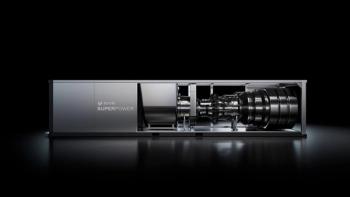
Steps in metallurgical root cause analysis
Metallurgical root cause failure analysis helps identify information related to a failure. Analysis of the fracture surface, called fractography, is the main component of a metallurgical failure analysis. Fractrography involves pattern matching of features found on the fracture surface to features relevant to different modes of failures. The evaluation starts with a simple visual inspection of the fracture surface or its direct replica.
A direct replica of the fracture surface is obtained and used for the analysis in cases where a portion of the fracture surface cannot be cut from the part for the microscopic analysis. The evaluation will then progress into an analysis with stereo microscope, scanning electron microscope (SEM) and transmission electron microscope (TEM). The analysis looks for the primary mode (mechanism) of failure, the failure initiation site, material defects, manufacturing defects etc. Each failure mode has its own telltale signs and appearance of the fracture surface. Common failure modes and a visual representation of each are included below.
The following main steps outline the metallurgical part of the failure investigation.
Material positive identification and chemical analysis of the base metal and foreign deposits Understanding of the alloy type and composition of the failed part is the first step in the material assessment. Correctly identifying an alloy allows the engineer to make an educated guess on its mechanical properties, determine the chemical compatibility between the alloy and service fluid, and define the scope and limitation of the analysis (such as non-destructive examination). Any inclusions or foreign deposits should be carefully studied. Very often the amount of foreign deposits, their nature and specific location are quite helpful in understanding the timeline of the fracture’s initiation and propagation. Areas for testing and specimen collections have to be carefully selected, and it is highly preferable to perform testing before blast media, cooling fluid or any other external agents make contact with the base material.
Non-Destructive Examination (NDE) of the failed componentAlthough most attention is typically paid to the failed component in the assembly (or failed area of an individual component), it is important to inspect the whole assembly for damages and incipient indications. Presence of indirect evidence might be as important as direct evidence. Some of the indications discovered may have a similar nature to the ones that led to a failure, but be in the propagation phase. Therefore, opening and studying them will provide a comparison to the main fracture surface, where the actual failure occurred.
Macroscopic and microscopic examination of the fracture surface and any other remaining evidenceTo understand the failure mechanism, it is critical to understand where and how the fracture initiated, how it propagated, for how long it propagated and where the final failure occurred. Preservation of a fracture surface by covering it in a protective compound should be done immediately after thorough dimensional and photographic evidence are collected. Microscopic examination can also provide evidence with regards to the presence, or absence, of material deterioration mechanisms. The following deterioration mechanisms are the most common in turbomachinery components: embrittlement, grain coarsening and dislocation, material impurities and their location within the grains or boundaries.
Hardness and mechanical testing
Hardness testing is the easiest way to estimate the mechanical properties of a material
A best practice is to test multiple locations on a part. The areas around the failure zone should be tested even more thoroughly and compared to the values obtained from the unaffected areas of the part. For smaller areas, microhardness traverse can provide useful information as well. However, the hardness readings within the expected range may not necessarily indicate good condition of the material. In some cases, a few competing deterioration mechanisms may affect the parts with some of them causing hardening, while the others are resulting in softening. Also, not having the exact hardness specifications for a virgin material makes things more complicated for the investigator. Mechanical testing (tensile, impact, toughness) can be performed if deemed necessary and if sufficient material is available to make specimens. Before extracting the test specimens, it is advised to confirm that they are going to be representative of the failed location by comparing hardness and microstructure. If a failure mechanism is suspected to be related to high temperature deterioration, a stress-rupture and creep testing may provide additional information about the material condition.
Newsletter
Power your knowledge with the latest in turbine technology, engineering advances, and energy solutions—subscribe to Turbomachinery International today.




